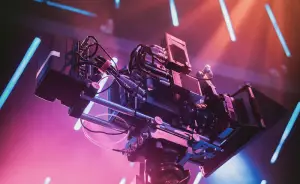
Financing a film isn’t easy. For every blockbuster movie that gets a multi-million dollar budget from its production company, hundreds of films can’t get a cent for a set of cardboard cutouts. Yet, there’s evidence that cash doesn’t make all the difference.
For example, the Japanese creators of Godzilla Minus One managed to bring the creature to life on a budget of $15m. Compare that to the nearly $200m cost of Warner Bros. Godzilla vs. Kong. Neither of those are student budgets but the good news is that there are plenty of potential ways to finance a movie.
Tax Incentives
Investopedia claims that the average “major” effort costs $65 million to produce, with an extra $35 million piled on for marketing and distribution. Low-budget pictures can usually expect to spend from nothing to about $1 million. With so many variables, cost is a difficult thing to judge.

Source: Pexels.
A huge chunk of financing comes from lottery and government funding, while tax incentives can be found whenever an area benefits from filming. A perfect example of this is The Hobbit: An Unexpected Journey (2012), which took a $25 million tax break from New Zealand on the condition that Peter Jackson would keep the trilogy where it belongs, in New Zealand.
Apart from that, grants from film schools, investors, and businesses (e.g. product placement) can also prop up a film’s budget – and may even be all that some productions can get. Finally, celebrities aren’t always against helping out the little guy. Stephen King’s Dollar Baby Program, which provided the rights to the writer’s stories for $1, ran from 1977 to 2023.
Now, it’s time to head to the future.
Non-Fungible Tokens
Cryptocurrency, a type of digital money, has had an interesting time recently. Its most visible asset, Bitcoin, hit a new record of $73,797.68 in March 2024, following some significant lows that had analysts writing it off.
Support from the gaming industry – and casinos, in particular – helped buoy Bitcoin’s fortunes, and the free spins casino CryptoBetSports continues to offer cryptocurrency promotions today, applicable to eight different tokens. These perks include free turns on Play’n GO’s Book of Dead slot as a welcome bonus.

Source: Pexels.
This kind of system works via the blockchain, a record of transactions that allows casinos to offer provably fair hands of blackjack, for instance. Blockchain is also the technology behind Non-Fungible Tokens or NFTs, which brings us to our next option for movie financing – crowdfunding. Producer Phil McKenzie, of Goldfinch Holdings, thinks that the selling of NFTs could pay dividends for creators.
What does that all mean? In essence, studios would sell unique assets, like stills, songs, or autographs, whose ownership is stored (permanently) on the blockchain. It’s a bit like owning a share in a company. NFTs can be sold and traded, and might even give the owner a say in the movie’s production – but it’s a part of the film that’s off-limits to everybody else.
Remember in The Simpsons when Bart bought an animation cel of The Itchy and Scratchy Show with Homer’s credit card? A digital version of this could one day help finance new movies. Hopefully, it’ll offer fans more than a single piece of Scratchy’s arm, though.
